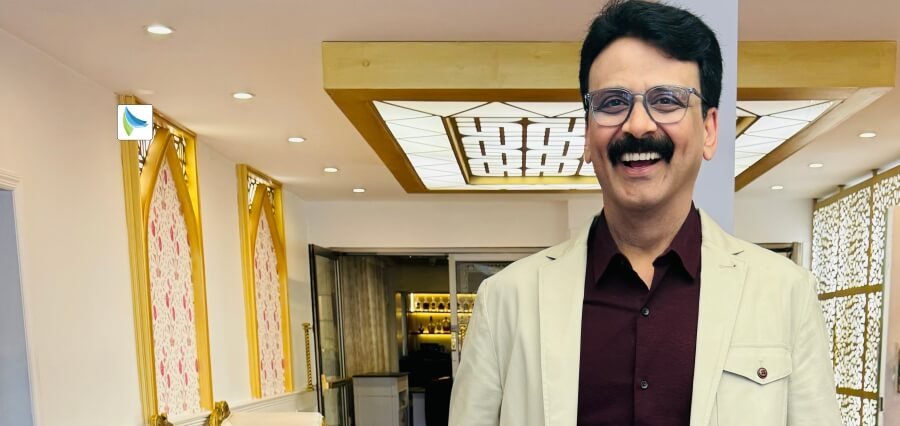Grid Integration Journey!
The energy sector is undergoing a transformative shift with the integration of electric vehicles (EVs) into the power grid. This evolution is driven by the need to address climate change, reduce emissions, and enhance grid reliability. Electric vehicles, with their substantial battery storage capabilities, present an opportunity to improve grid stability, provide backup power during outages, and increase the overall sustainability of energy systems. Collaboration between the utility and automotive industries is key to developing innovative solutions that meet the needs of consumers while promoting energy efficiency and environmental responsibility.
Kristin Landry, an Expert Product Manager, has played a pivotal role in this transition. Her journey began as a mechanical engineering student involved in a solar car team, which sparked her interest in sustainable technologies and climate change. Kristin’s professional path led her to the California Public Utilities Commission, where she explored the potential of integrating electric vehicles with the power grid. Currently, she is focused on bridging the utility and automotive sectors, designing equitable and scalable solutions to facilitate the widespread adoption of electric vehicles.
At Pacific Gas and Electric Company (PG&E), Kristin is recognized for her expertise in bidirectional electric vehicles. The company is engaged in innovative pilot programs aimed at testing and refining the deployment of bidirectional EV systems, which allow vehicles to draw power from and supply power to customers and the grid.
These initiatives are designed to reduce the total cost of ownership and energy costs for customers, make the technology more accessible, and ensure its seamless integration into the existing grid infrastructure. Through strategic partnerships and technological advancements, the company aims to position electric vehicles as a core component of a sustainable and resilient energy future.
Let’s explore how Kristin is transforming the energy sector through her innovative approach:
From Solar Cars to Grid Integration
During her collegiate years as a mechanical engineering student, Kristin participated in the solar car team as an extracurricular activity. This involvement significantly heightened her awareness about climate change and introduced her to electric vehicles, albeit physically rather than as a career aspiration.
Her tenure at the California Public Utilities Commission, where she worked on interconnection, presented her with the tangible possibility of integrating electric vehicles with the grid. Presently, she is actively managing the convergence of the utility and automotive industries to actualize this prospect.
Embracing New Technology to Unlock the Potential Benefits of Electric Vehicles
Kristin believes there is an opportunity to unlock a vast resource capable of contributing numerous benefits: reliability—supporting the grid when it is most strained; resiliency—supporting customers when their power does go out; and emissions reduction—absorbing solar during the day when it is abundant (and lower cost) and making that power available later in the evening, when electricity is more expensive and demand on the grid is greater.
Keeping the customer at the heart of solution development is essential. There are numerous considerations for any customer contemplating the adoption of this technology; in the quest to enhance grid reliability, aligning the incentives for the customer with the needs of the grid results in a mutually beneficial situation.
This is a growing area of interest, especially for school buses, which have a very predictable schedule. This simplifies planning their charging and discharging and presents a more reliable energy source for the utility to draw from. These buses also drive through everyone’s neighborhood, reducing harmful pollutants, which is a significant health benefit to their communities. Leveraging these systems to support community microgrids is another exciting prospect for localized resiliency.
Connecting EVs to the Grid
Kristin is recognized as a subject matter expert at the intersection of electric vehicles and distribution-level grid interconnection. Besides eliminating vehicle emissions, each electric vehicle contains a massive battery—much more than a typical home energy storage solution—making each one an incredibly valuable grid asset. Grid-connected electric vehicles have been part of the smart energy vision for a long time, and interconnection is a critical nexus for enabling this technology.
Mobile energy storage systems present unique challenges as they act as both load and generation assets and have far less predictability and availability for control because their primary use is transportation. This is part of the negotiation between automakers and utilities: protecting the asset for its intended use while opening it up to provide greater value to customers. The goal here is to not interfere with customers’ driving and still take advantage of the immense amount of time that most passenger vehicles spend parked and idle.
Ensuring a Safe Transition to Providing Off-Grid Power
Evaluating how systems transition to providing off-grid power for resiliency is crucial to ensure safe system operation. Additionally, customers with a focus on sustainability may already have on-site solar or other energy storage solutions. This necessitates figuring out how to integrate vehicle-to-grid systems so that all available energy systems operate harmoniously rather than interfering with each other.
Reducing Total Cost of Ownership for Wider Accessibility
The aim of PG&E’s pilots is to inform the development of full-scale programs. They are gaining a wealth of knowledge about what it takes to install these systems in homes and business parking lots, with customers learning alongside them. Identifying these pain points will assist in creating a more streamlined experience for future adopters.
They will also be testing a concept known as Hourly Flex Pricing, where the cost of electricity varies each hour of the day. The price of electricity will reflect various cost components for the utility to provide power at any given time.
This will help answer the question, “How much can a customer save, or even earn, using a bidirectional EV?” Reducing the total cost of ownership makes this technology more accessible to a wider range of customers.
More broadly, as they work with customers to install these systems, they are becoming increasingly aware of the distribution-level grid capacity required to support them. This is prompting innovation around utilizing the existing assets, and how they build out their system, to support more EV charging and clean energy integration.
Overcoming Initial Challenges
The primary challenges Kristin’s team is currently facing revolve around what must be true before getting to system operation. The first challenge is product availability; there are very few vehicle-charger pairs capable of bidirectional operation. More options are on the horizon, but the current options still require a vehicle and charger that work together; each pairing essentially speaks a different language.
As more products become available, there is a need to facilitate the adoption of this new technology. There are numerous technical and financial considerations, and customers need to be well informed to feel comfortable making those decisions. Customer education is crucial to setting expectations and enhancing the customer experience.
Kristin’s team has identified a number of costs that extend beyond merely purchasing the equipment and getting it installed. They acknowledge that the financial incentives they can provide may not cover the full cost customers face to participate.
Maintaining equity during the early adoption of new and costly technologies like bidirectional electric vehicles poses a challenge. Kristin and her team have introduced additional incentives for priority customers and acknowledge that equity will need to play a more prominent role in designing full-scale programs.
Fortunately, the broader adoption of electric vehicles yields benefits for all customers: the transition to electric transportation addresses California’s largest source of emissions, and increased electricity consumption allows the utility to distribute costs and reduce rates, creating a virtuous cycle.
Kristin’s team is eager to assist up to 1,000 residential customers in acquiring these systems and gaining firsthand experience with the technology and its implications for them. Their commercial customer-facing pilot will support the installation of up to 200 chargers across multiple fleets.
PG&E’s suite of pilots are also a uniquely ambitious project to collaborate with multiple equipment manufacturers to offer customers as much choice as possible. This will further assist them in understanding the technical requirements for both the hardware and software components.
Navigating Partnerships in the Utility Sector
As a utility, aiding their partners in achieving success is in PG&E’s best interest. Kristin has discovered that taking a broader perspective can help establish a mutual goal that both parties agree to work towards. From there, partnerships are about people. While she may be the primary point of contact, it’s her ability to bring in expertise and support from across the company that nurtures a relationship.
Kristin also amplifies her personal impact by seizing opportunities to share her experiences with others. She particularly values her discussions with teams at other utilities who are also engaging customers adopting this new technology. Utilities don’t have to compete with each other, so they are very open to sharing and learning from one another.
Understanding Electric Energy Systems through EV Adoption
Kristin works diligently to ensure that customer-facing materials clearly explain things so that customers understand what they are signing up for and know what to expect. She also works very closely with participating technology providers on their communications to customers when they want to own the customer relationship. Helping technology providers understand the utility processes for connecting these systems is also beneficial as they all learn to work together.
Kristin is hopeful that this technology will also serve as a vehicle for customers to gain a broader understanding of their electric energy system and how they can contribute. Her work is centered around figuring out how to get more batteries-on-wheels connected to the grid and operating in ways that support the system as a whole and at the local level
Advice for Aspiring Leaders in Clean Energy and Transportation
As a leader in the EV landscape, Kristin’s advice to emerging professionals or aspiring leaders who are passionate about making a positive impact in clean energy and transportation is that “learning is the foundation of growth. By engaging with those in the industry, I have made connections that continue to expand my perspective and help me understand the context for my own work.”
She encourages people to find an organization in their field that has built a strong community and get involved to improve their visibility. Lastly, she believes in transforming colleagues into friends for deeper and more fulfilling relationships.
Future Aspirations for Electric Vehicles
Looking ahead, Kristin has high aspirations and big goals for the future of electric vehicles – her team is just getting started! She is keen on creating an ecosystem that makes it easy to choose a bidirectional electric vehicle over a unidirectional one.
Ultimately, she sees her role as continuing to focus on understanding what it takes to fuel customer adoption. As they move from pilots to full-scale programs, this will require building more established and sustainable processes to turn bidirectional electric vehicles into a ubiquitous part of powering our lives.



















